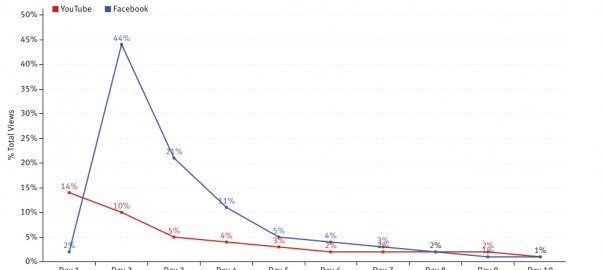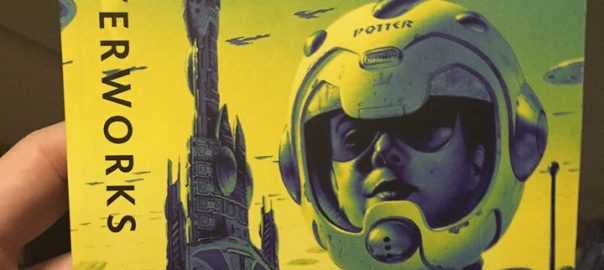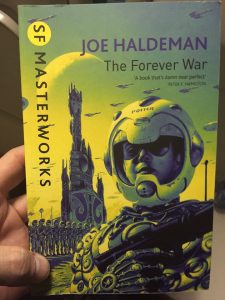Here’s a selection of my favourite articles from the week that was…
Axois published a great feature looking at The recent explosion of right-wing news sites and why this has occurred:
“Why it matters: According to experts, digital technology has made it easier to exploit the political divisions that have always existed. Sarah Sobieraj, associate professor of Sociology at Tufts University, told CNN there has been an increase in political polarization in the U.S., but not nearly enough to account for this development. “The technological, regulatory, and media space has shifted into one in which this is profitable, and profit is the driving force.”
How they profit: Google and Facebook’s algorithmically-driven news distribution platforms have created an environment in which:
- a) partisan news sites can easily reach fringe audiences, and
- b) news sites are financially incentivized to tilt one way or another.
Facebook, in particular, algorithmically favors content that appeals to user bias and interest. According to comScore Vice President Andrew Lipsman, to elicit high engagement and repeat visitation, “sites must usually speak to a very specific audience.” Although this limits the appeal to a broader readership, it creates a sustained and engaged audience that appeals to advertisers.”
Buzzfeed’s Craig Silverman looked at this in more detail by examining two US news websites with conflicting political views but owned by the same publisher. That’s not itself an issue, but when you see how similar these stories are (apart from tone and political bias) you can understand why trust in the media is at a current low.
“Liberal Society and Conservative 101 are among the growing number of so-called hyperpartisan websites and associated Facebook pages that have sprung up in recent years, and that attracted significant traffic during the US election. A previous BuzzFeed News analysis of content published by conservative and liberal hyperpartisan sites found they reap massive engagement on Facebook with aggressively partisan stories and memes that frequently demonize the other side’s point of view, often at the expense of facts.
Jonathan Albright, a professor at Elon University, published a detailed analysis of the hyperpartisan and fake news ecosystem. Given the money at stake, he told BuzzFeed News he’s not surprised some of the same people operate both liberal and conservative sites as a way to “run up their metrics or advertising revenue.”
“One of the problems that is a little overlooked is that it’s not one side versus the other — there are people joining in that are really playing certain types of political [views] against each other,” Albright said.
And all it takes to turn a liberal partisan story into a conservative one is to literally change a few words.”
Joseph Bernstein wrote a great feature on YouTube’s role in the spread of misinformation. Basically, YouTube needs to do a lot more promoting ‘good’ news over ‘bad’:
“YouTube does “demonitize” videos that it deems “not advertiser-friendly,” and last week, following a report in the Wall Street Journal that Disney had nixed a sponsorship deal with the YouTube superstar PewDiePie over anti-Semitic content in his videos, YouTube pulled his channel from its premium ad network. But such steps have tended to follow public pressure and have only affected extremely famous YouTubers. And it’s not like PewDiePie will go hungry; he can still run ads on his videos, which regularly do millions of views.
Ultimately, the platform may be so huge as to be ungovernable: Users upload 400 hours of video to YouTube every minute. One possibility is drawing a firmer line between content the company officially designates as news and everything else; YouTube has a dedicated News vertical that pulls in videos from publishers approved by Google News.”
Elsewhere, I was really inspired by James Tyner’s recent work looking at how young audiences think about online newspaper design and content. Some of the feedback included:
“I don’t find it super appealing all the time to sit down and read a huge article online, but you don’t get all the nuance from just a breaking news headline on Twitter. I wish there was some medium between the two.”
“I don’t like the news stories that are basically slideshows in the format of an Instagram video or something that is 30 seconds long and plays 5,000,000 times on Facebook. I feel like it just leaves out a lot of details and I almost instantly don’t trust those as much as a full news story I read.”
“I always fall for the clickbait, every time.”
That last point is particularly important for younger audiences – the simply won’t put up anymore with your clickbait. You see this with older audiences too now, where commenters bond together to reveal the point of the article, saving you that click.
I also wondered if the students had read Axios as part of this research. They seem to be doing a good job in creating small ‘snackable’ updates around quite complex topics. After some initial reservations about their approach, I do think they are onto something. BUT, if you aren’t a fan of their site, or this kind of editorial strategy, you may still be interested in their newsletter for all its delicious White House gossip.
And lastly, next week one of the best UK synth bands that’s ever been release their new album. I’m currently feeling very conflicted about this – and next week I’m going to tell you why.
Until then.


